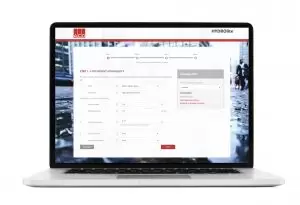To help engineers size up trench drains, ACO’s HYDROlite software uses results based on laboratory test verified hydraulic behaviour.
When it comes to designing the surface drainage of stormwater trench drains, swales and pits all have their applications. However, linear trench drains have become particularly popular in contemporary design.
There are several reasons for this, says John Sordo, Head of Marketing and Product Management at ACO. For starters, linear trench drains don’t require much excavation and pipework, and they enable one-way grading of the pavement, which makes installation more cost-effective. Linear trench drains also complement flat, safe and usable pavements.
However, as discussed in the recent ACO whitepaper Take the guesswork out of trench drainage selection, when the size of the trench drain is incorrect, its value flows away.
“If you’ve over-specified the size of the drain, it runs dry most of the time, meaning you don’t have enough constant water helping to keep it clear and usable,” says Sordo, a civil engineer by training. “It collects rubbish and soil and becomes a big planter box for weeds. Drains that are too large also cost considerably more.
“Conversely, if the drain is too small, narrow or shallow, you’ll experience ponding or flooding. Water passes over the drain and starts transgressing into areas it is supposed to protect.”
Trench drain sizing software
In the past, Sordo says, designers have often relied on a rule-of-thumb approach to arrive at drain size estimates, rather than an accurate and calculated approach. That’s because while there has long been published guidance for sub-surface pipe drainage, the same is not true for trench drains.
The ACO whitepaper is based on published peer-reviewed studies and breaks down the science behind the hydraulics of trench drains and outlines an accurate approach to sizing trench drains. The company’s new online calculator is the next logical step – it puts this theory into practice in four simple steps.

Called HYDROlite, it is a free, bespoke, hydraulic design program that provides an immediate and accurate calculation using an equation for steady, non-uniform flow.
After you input a project’s unique catchment hydraulic data, the calculator models the flow profile in the channel run. With this information, the capacity of the trench drain is determined and engineers can choose trench drain sizes for every separate catchment in their project.
The future of drainage
Sordo says that when it comes to surface water management, climate change and urbanisation are growing areas of concern for engineers and planners. This is chiefly driven by the introduction of more impervious surfaces in cities. He also says historical rainfall averages are moving and this has been captured in the recently updated Australian Rainfall and Runoff data by Geoscience Australia.
ACO is adapting to changing circumstances by investing in proprietary research with partner universities. The global company has also evolved its product range to assist engineers with surface water management from the point of capture to the point of sustainable release. As weather patterns become more unpredictable, ACO’s collect, clean, hold and release system chain of solutions aid the collective effort to assist planners to protect people from water and water from people, says Sordo.
“In terms of major infrastructure, our focus is in two areas – urban infrastructure engineering and civil transportation engineering. We work in roads and highways, mass transit systems such as bus, light rail, seaports and airports, and so on.”
The calculator is not the only option ACO provides for those making design decisions, says Sordo.
“We have an experienced sales team backed by a Sydney-based technical department, staffed by engineers, who are happy to talk about your project. If engineers want a specific documented recommendation, they can fill out a design requisition form and an ACO representative will get in touch. This is a free service offered without obligation.”
ACO also offers access to other free online software, such as a Grate Intake Calculator. It’s useful because even a correctly sized drain can cause flooding if the wrong type of grate is used.
“The earlier ACO gets involved in a project, the better,” says Sordo. “We can recommend a cost-effective surface drainage system that saves the need for unnecessary pipe infrastructure and pavement grading by utilising existing pavement levels and drainage lines.
“The right trench drain does a lot more than remove water efficiently. It ensures legal compliance and structural integrity. Furthermore, ACO can also help designers integrate contextual elements visually to help you tell the story you want to tell.”
To start using HYDROlite or to watch a video that explains how it works, go here. If you would like a more hands-on approach, you can click on the red button and fill out a design assistance form. Try HYDROlite today

